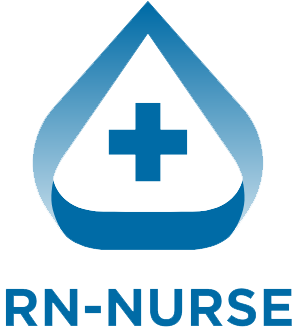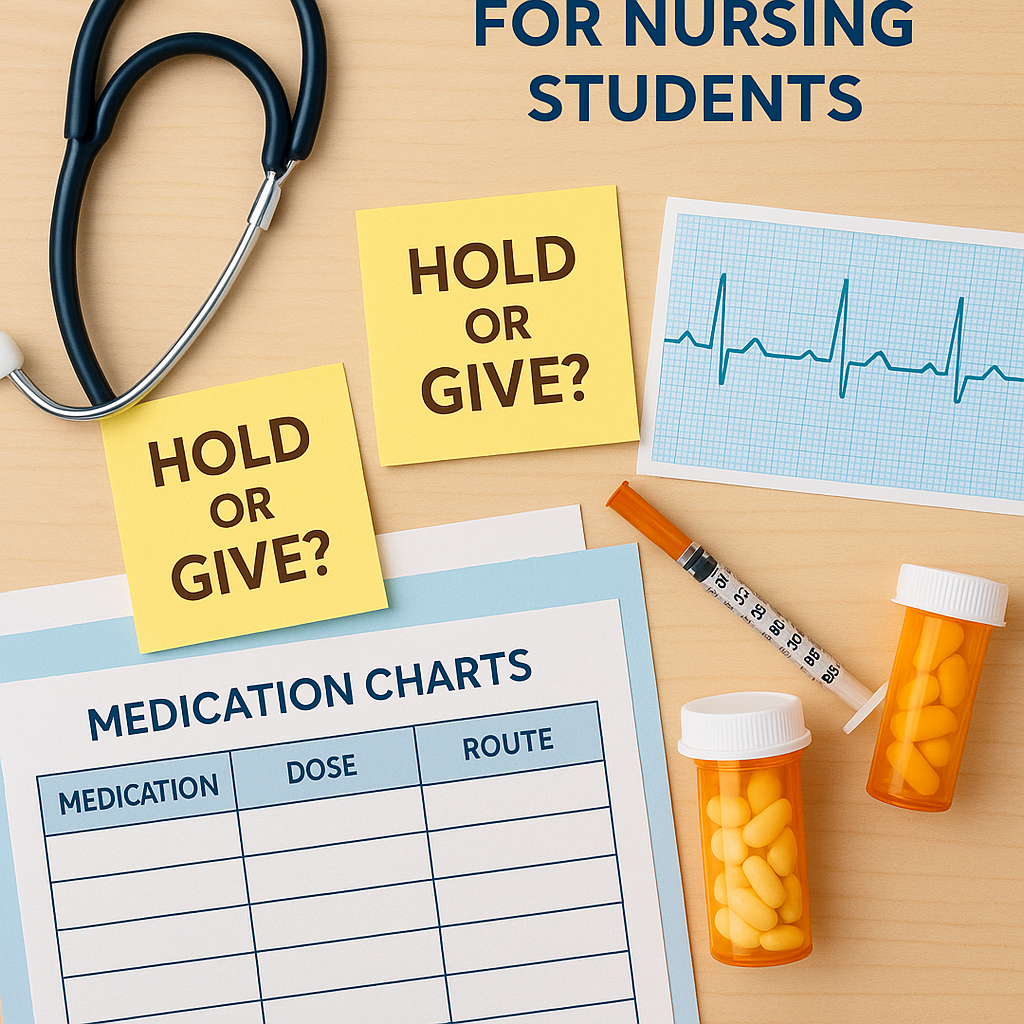When it comes to medication administration, NCLEX questions often ask nurses to decide: Should you hold the medication or give it? These questions test your critical thinking skills as a future registered nurse (RN nurse). Missing a key detail could lead to dangerous outcomes for patients, which is why practicing these scenarios is essential for every nursing student.
This article will walk you through common “hold or give” scenarios, focusing on critical medications you’ll encounter in NCLEX prep, nursing practice, and clinical rotations.
💊 1. Digoxin (Lanoxin)
- Scenario: Your patient has an apical pulse of 50 bpm.
- Action: Hold the medication.
- Why? Digoxin can cause bradycardia. Most protocols require holding if the heart rate is <60 bpm.
✅ NCLEX Tip: Always check apical pulse for a full minute before giving Digoxin.
💊 2. Beta Blockers (e.g., Metoprolol)
- Scenario: BP 88/50, HR 52 bpm.
- Action: Hold the medication.
- Why? Beta blockers lower both HR and BP. Giving them in hypotension/bradycardia can worsen the condition.
✅ NCLEX Tip: Nurses must always assess vital signs prior to administration.
💊 3. Insulin
- Scenario: Patient’s blood glucose is 60 mg/dL, scheduled insulin is due.
- Action: Hold insulin.
- Why? Giving insulin can cause severe hypoglycemia. Instead, notify provider and administer glucose if needed.
✅ NCLEX Tip: Always check blood glucose before giving insulin.
💊 4. Warfarin (Coumadin)
- Scenario: INR is 5.2.
- Action: Hold the dose.
- Why? Therapeutic INR is typically 2–3 for most patients. A level >3.5 means high bleeding risk.
✅ NCLEX Tip: For RN nurses, bleeding precautions and lab monitoring are priority.
💊 5. Antibiotics (e.g., Penicillin)
- Scenario: Patient develops hives and shortness of breath after the first dose.
- Action: Stop immediately, hold further doses, and notify provider.
- Why? This is likely an allergic reaction → risk of anaphylaxis.
✅ NCLEX Tip: Nurses must check allergies before giving antibiotics.
💊 6. Furosemide (Lasix)
- Scenario: Patient’s potassium level is 2.8 mEq/L.
- Action: Hold the medication.
- Why? Lasix can further lower potassium, increasing risk for arrhythmias.
✅ NCLEX Tip: Always monitor electrolytes with diuretics.
Why This Matters for Nurses and the NCLEX
These “Hold or Give?” NCLEX practice scenarios highlight the importance of:
- Assessing vitals and labs before giving meds.
- Recognizing red flags that require holding medication.
- Acting quickly to protect patient safety.
For every nurse, nursing student, or RN nurse, mastering these scenarios builds the critical thinking skills needed for safe practice and helps you succeed on the NCLEX.
📝 Final Thoughts
Medication safety is one of the most tested areas on the NCLEX. Whether you’re studying with a nursing bundle or practicing with flashcards, always ask yourself: “Would I give this medication right now, or should I hold it?”
Knowing when to hold or give is what separates a registered nurse from a student — and it’s a skill that saves lives.

